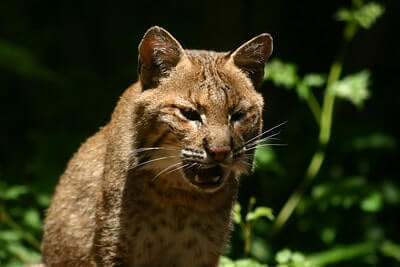Disclosure: We may earn commissions if you purchase products after clicking on a link from our site.
Are you ready to embark on the thrilling adventure of hunting bobcats? Learning how to hunt bobcats can be an exhilarating experience for any outdoor enthusiast. Bobcat hunting is an exciting pursuit that requires skill, patience, and strategic planning in a wooded area.
Understanding the behavior and habitat of bobcats is crucial for a successful hunt. With proper knowledge and preparation, you can increase your chances of encountering these elusive predators. Let’s dive into the world of bobcat hunting and discover the strategies that will lead you to a memorable and rewarding hunting experience.

Table of Contents
How To Hunt Bobcats
1. Scouting
To hunt bobcats, you have to find the areas where they live; that is easier said than done. They are reclusive, natural stalkers and like a dense forest. When scouting for bobcats, look for bobcat tracks in the snow, scratch marks, mud, and sand along creeks and pond banks. Be on the lookout for their tracks and droppings.
A fresh track can be from one and a half to two inches long and up to two inches wide. You won’t see their claws in the tracks as they remain retracted until they are needed. Its droppings are two to three inches long and not segmented as it is held together by the hair of the prey it ate.
Look for a brush pile, rocky outcroppings, thick drainages, dense low-lying vegetation, or a water source. Look for areas that are the habitats of small game animals like rabbits, squirrels, birds, and mice. Fisher, coyotes, porcupines, and fawns are also prey for bobcats. Additionally, signs of a fresh kill can also be a bobcat sign that they are in an area.
Talk to the local wildlife biologist, local farmers, and ranchers if bobcats are in an area and, if they are there, where they are often spotted. Old, deserted barns are also good areas to scout as they often house rabbits, birds, mice, and other small rodents that bobcats feed on.
Drive the back roads, especially after a snowfall, to look for bobcat tracks. Look for habitats that could be those of rabbits and other small game animals on the back roads. Bobcats will be there if small game animals reside in those areas.
2. Predator Calls
One of the best ways to lure bobcats is by using a distress call. Use short and intermittent calls to get the attention of bobcats. Rabbit distress sounds have proven to be effective in getting the attention of bobcats as they are always looking for an easy meal. You can also use a variety of calls from cottontail rabbits, jackrabbits, snowshoe hares, and other birds.
After making the call, bobcat callers should remain quiet, sit still, just move their eyes to scan the hunting area, and avoid making any movements. Quietly scan the open fields using binoculars or spotting scopes for any sign of movement. Just know that the bobcat is stalking you when it decides to respond to your call as it usually stalks its prey. It will avoid detection as it creeps toward the call to spot the animal making the call.
You can start calling lightly and gradually increase the intensity. You have to be very patient and disciplined after the mouth call because a bobcat will approach the sound quietly and take its own time to survey the area. Just sit still and watch because when it seems like nothing is happening after 10 or 20 minutes, then all of a sudden a bobcat will appear.
A mature bobcat will not rush to a distressed call and won’t reveal itself until it feels completely safe. The moaning of a female bobcat during the mating season will increase the chances of a male bobcat showing up quickly. You can read a review of the best predator calls from this link.
3. Hunting Partner
Having a hunting partner or hunting with a group can significantly enhance the safety and effectiveness of bobcat hunts. Bobcats are elusive and formidable predators, often requiring hunters to navigate the open country and endure long periods of waiting and stalking.
By partnering with others, hunters can share knowledge, resources, and strategies, increasing the likelihood of success. Additionally, hunting in pairs or groups provides an extra layer of safety, especially when traversing unfamiliar or remote areas where hazards such as uneven terrain, inclement weather, or encounters with other wildlife may pose risks.
Moreover, having multiple sets of eyes and ears can improve the chances of spotting bobcats and coordinating hunting tactics for a more coordinated and efficient approach.
A hunting partner can make it easier to hunt bobcats although it increases the risk of one or two of you being seen by the bobcat. Most of the time, the bobcat will see you before you see it and it will be gone. However, a hunting partner allows one person to make the predator calls while the other remains still and poised to take the shot.
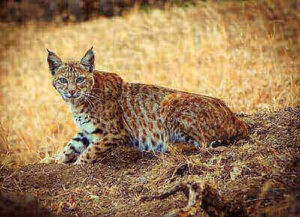
4. Decoy
Using decoys can be an effective strategy when hunting bobcats. By mimicking the appearance and behavior of potential prey, such as rabbits or birds, decoys can attract curious bobcats within range for a clear shot.
Setting up decoys in strategic locations near a bobcat habitat, such as game trails or brushy areas, can increase the likelihood of drawing them out into the open. It’s important to place decoys naturally and inconspicuously to avoid spooking the cautious bobcats.
Additionally, incorporating motion into decoys, such as through mechanical movement or fluttering feathers, can further enhance their effectiveness by adding realism to the decoy’s appearance. Overall, using decoys can be a valuable tool in your arsenal when hunting bobcats.
5. Trail Cameras
Trail cameras are invaluable tools for hunters seeking to capture images of elusive bobcats in their natural habitat. These cameras can be strategically placed along game trails, near known bobcat dens, or in areas where signs of their presence, such as tracks or scat, have been observed.
By using motion sensors, trail cameras automatically trigger when movement is detected, capturing high-resolution images or videos of passing wildlife, including bobcats. This allows a successful bobcat hunter to gain valuable insights into the habits, routines, and preferred routes of these elusive predators, helping them to plan their hunting strategies more effectively.
Additionally, trail cameras provide a non-invasive way to monitor bobcat activity without disturbing their natural behavior, making them an essential tool for any hunter pursuing these elusive creatures.
6. Stand Set Up
Where you set up your stand for hunting bobcats is very important for success. You want to set up your stand in an area that has some cover to conceal you but also should be close to the open area for you to clearly see the bobcat when it eventually shows up. Bobcats are very good at avoiding detection and will not cover a lot of open ground.
Therefore, you want to set up close to the thick cover so they are comfortable coming to your call. If possible, sit with your back to the sun. Additionally, you should set up more than one stand about half a mile apart when hunting bobcats. You will have a greater chance of success with more stands.
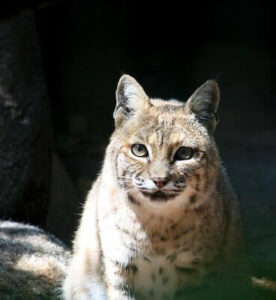
7. Camouflaged Clothing
Bobcats are very wily, smart, and cautious. They will often see you before you see them. To improve your chances of hunting bobcats, you have to be well-camouflaged in the surrounding area. If you can match the bobcat’s ability by 50% to camouflage and attune itself to the environment, your chances of success will be greatly enhanced. Bobcats are very cautious and you will all of a sudden see them appear out of nowhere. When learning how to hunt bobcats, you want to conceal yourself and control your body movements.
8. Wind Direction
When hunting bobcats, like any other hunt, be mindful of the wind direction. Bobcats have a well-developed sense of smell despite what many hunters think. Always hunt downwind of bobcats to avoid the wind taking your scent to them. If bobcats pick up your scent, they will leave the area.
Additionally, you may also come across coyotes and other animals that you can hunt when in search of bobcats. Therefore, always hunt with the wind in your face. When learning how to hunt bobcats, always know the wind direction concerning your position and the area you expect the bobcats to be.
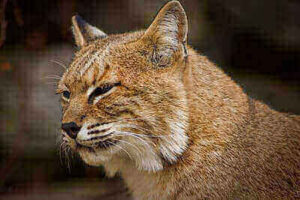
Bobcat Hunting Tips
1. Look for bobcats in areas with dense vegetation, rocky outcroppings, brush piles, and thick drainages. When learning how to hunt bobcats, these are some of the areas to pay close attention to.
2. Areas that are the habitats of small game animals like rabbits, squirrels, porcupines, mice, and birds will have bobcats. Bobcats will be preying on small game animals and when you are learning how to hunt bobcats, target these areas and you will find bobcats.
3. Old, unused barns are prime habitats for mice, rabbits, squirrels, and other small game animals. Bobcats will be there hunting down prey.
4. After a snowfall, look for bobcat tracks. Drive the back roads and be on the lookout for bobcat tracks. Snowstorms will help you discover the animals that are in the area. When learning how to hunt bobcats, always check the back roads after a snowstorm for bobcat tracks.
5. When calling bobcats, sit still and only move your eyes to scan for bobcats. Avoid any body movements and never open your mouth. Bobcats can easily pick up your body movements from a good distance. When learning how to hunt bobcats, always control your body movements.
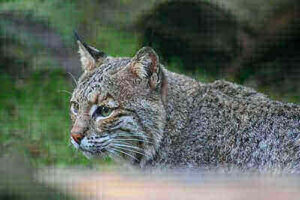
6. A moving decoy can be used to lure bobcats as you make the calls. The moving decoy will get the attention of the bobcat and it will not be focused on you.
7. Be prepared to shoot at all times as a bobcat will slip up on you no matter how well you scan the area.
8. A bobcat will freeze momentarily when it is discovered. Be prepared to shoot the moment you begin calling.
9. Remember a bobcat will be stalking you as you are calling. It will move quietly and avoid detection as it inches closer to the prey that is making the calls.
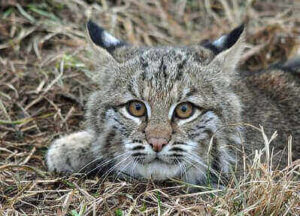
10. The call of a moaning female bobcat in heat will get a male bobcat to quickly respond to the call as it doesn’t want another male bobcat to mate with the female.
11. Hunting bobcats will test your patience like you never imagined. Bobcats sometimes take a very long time to respond to calls.
12. Always remember chances are the bobcat will see you before you see it and it will disappear.
13. Stop the bobcat when it is within range by doing a lip squeak. This sound instantly halts a bobcat in its tracks and it turns its head and eyes in your direction.
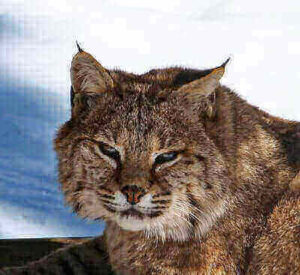
14. Ask local farmers, rural mail carriers, and wildlife biologists where bobcats reside and where they have spotted them.
15. Use distressed calls of small game animals like squirrels, rabbits, porcupines, snowshoe hares, cottontails, and jackrabbits.
16. Set up trail cameras to collect information on bobcats’ travel routes and other behaviors.
17. The early morning hours and dusk are the most active times for bobcats.
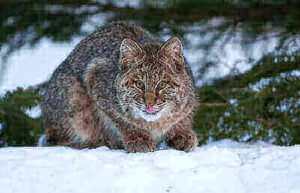
18. Find a good spot to set up your tree stands. Set them about half a mile apart.
19. A hunting partner can help with hunting bobcats. One person makes the calls while the other is the shooter. However, it increases the chances of the bobcat spotting one or both of you.
20. When you are ready to leave, move very slowly, and look carefully beneath you and a few yards from your location. Scan the area for any movement. it’s highly possible that a bobcat could be right near your stand the whole time.
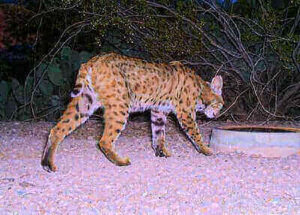
The Bottom Line
Bobcats are very challenging to hunt as they are smart, cautious, elusive, reclusive, and difficult to spot. They blend well with the environment and are well-camouflaged. Successful hunters perform thorough scouting, choose good locations for their stands, and develop very good cleaning skills.
In this article, we discussed how to hunt bobcats to help you be a better hunter of bobcats. You can also read how to hunt cougars, how to hunt wolves, how to hunt fox, how to hunt red fox, and how to hunt wild sheep.
